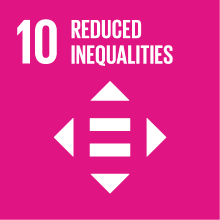Audiovisual and Media Communication in the Arab World
- Academic year
- 2018/2019 Syllabus of previous years
- Official course title
- Comunicazione audiovisiva e Media nel mondo arabo
- Course code
- NA001C (AF:294492 AR:163348)
- Modality
- On campus classes
- ECTS credits
- 6
- Degree level
- Minor
- Educational sector code
- L-OR/12
- Period
- 2nd Semester
- Course year
- 1
- Where
- VENEZIA
- Moodle
- Go to Moodle page
Contribution of the course to the overall degree programme goals
The formative objectives of the module concern building skills in mass media and audiovisual analysis.
Students will be provided with the historical-political-cultural data and theoretical tools needed to understand and analyse Arab produced films and videos.
Expected learning outcomes
- know and understand the main figures, themes, currents and trends of the Arab world’s audiovisual productions, as well as its most important media, in the light of the fundamental historical-cultural developments of the region and its relationship with the West, starting from the colonial era and the 19th century Renaissance (Nahda) up to the current phase of globalization, including the “Arab spring” and the post-2011 years;
- analyse Arab produced films and videos, contextualizing them, identifying their stylistic characteristics and distinguishing their autochthonous and allogeneic elements.
Pre-requirements
Contents
1. Intertextuality; intermediality; transculturality.
2. 19th century: beginning of the modernization of the Arab world; impact of European colonialism; introduction of the press; the Nahda (Renaissance) cultural movement; newspapers and magazines.
3. Traditional show forms; birth of modern Arab theater; cosmopolitanism of Cairo and Alexandria; nationalism and feminism; caricature and satirical journalism.
4. Arrival of the cinema (1896); construction of cinematographers and cinematographic productions during colonialism; independence; Arab cinema and cultural identity; censorship; film adaptation.
From the 1950s to the 2000s:
5. Egyptian cinema: Hollywood on the Nile.
6. Cinema in Syria, Palestine, Lebanon, Iraq and Gulf countries.
7. Cinema of the Maghreb.
8. The radio; television from national to pan-Arab satellite networks starting from Al-Jazeera.
9. The "Arab Spring" and social media; media coverage; songs of the January 25 Revolution (Egypt); post-2011 films and videos.
10. The Egyptian comedian Bassem Youssef; Arab satire on YouTube.
Referral texts
Corrao, Francesca (cura di), Le rivoluzioni arabe. La transizione mediterranea, Milano, Mondadori, 2011, (scaricabile). Capitoli:
1. Corrao, Francesca, “Il mondo arabo. Due secoli di storia e cultura”, pp. 7-47;
2. Id., “La condizione delle donne nel mondo arabo e il contributo dato alle rivoluzioni”, pp. 48-64;
4. Sibilio, Simone, “La rivoluzione dei (nuovi) media arabi”, pp. 81-109;
5. Nicosia, Aldo, “La Tunisia dalla rivoluzione alla nuova costituzione”, pp. 110-133;
6. Gervasio, Gennaro, “Egitto: una rivoluzione annunciata?”, pp. 134-161.
De Poli, Barbara (2012), “Dal dissenso alla rivoluzione: satira e potere nel mondo arabo contemporaneo”, Diacronie. Studi di Storia Contemporanea, vol. 11/3, 2012, pp. 1-22, http://www.studistorici.com/wp-content/uploads/2012/10/09_DE-POLI.pdf
Guth, Stephan, “Twenty-Three Recent Arabic Films. Impressions from two film festivals (Oslo and Tübingen, 2016), Journal of Arabic and Islamic Studies • 16, 2016, pp. 299-326, http://www.lancaster.ac.uk/jais/volume/docs/vol16/v16_09g_guth_299-326.pdf
Nicosia, Aldo, Il cinema arabo, Roma, Carocci, 2007.
Nicosia, Aldo, Il romanzo arabo al cinema. Microcosmi egiziani e palestinesi, Roma, Carocci, 2014.
Shafik, Viola, Arab Cinema. History and Cultural Identity, Cairo, AUC Press, 2016, pp. 209-342.
Audiovisuals on Moodle
Suggested readings:
Abusharif, Ibrahim N., Parsing “Arab Spring”. Media Coverage of the Arab Revolutions, Occasional Paper Series, Northwestern University in Qatar, February 2014, http://www.qatar.northwestern.edu/docs/2014-Parsing-Arab-Spring.pdf .
Anderson, Benedict, Imagined Communities: Reflections on the Origins and Spread of Nationalism, London/New York, Verso, [1983] 2006.
Arvidson, Jens/Askander Mikael/Bruhn, Jørgen/ Führer, Heidrun (eds), Changing Borders. Contemporary Positions in Intermediality, Intermedia Studies Press, [2007] 2016, https://lup.lub.lu.se/search/ws/files/7694317/changing_borders_e_bok_.pdf
Bayat Asef, Life as Politics. How Ordinary People Change the Middle East, 2nd Edition, Standford, Standford University Press, 2013, https://openaccess.leidenuniv.nl/bitstream/handle/1887/15229/A.+Bayat+-+Life+as+Politics.pdf?sequence=1
Branca, Paolo, De Poli, Barbara Zanelli, Patrizia, Il sorriso della mezzaluna: umorismo, ironia e satira nella cultura araba, Roma, Carocci, 2011.
Dinia, Saadia/ Kenza, Oumlil, “Women in Contemporary Moroccan Cinema”, Journal of Middle East Media, Vol. 12, Spring 2016, pp. 40-59, https://jmem.gsu.edu/files/2014/07/JMEM-2016_ENG_Dinia_Kenza.pdf
Elouardaoui, Ouidyane. “Contemporary Arab Music Video Clips: Between Simulating
MTV’s Gender Stereotypes and Fostering New Ones”, Imaginations, Issue 4-1, 2013, pp. 112-133, http://imaginations.glendon.yorku.ca/wp-content/uploads/2013/08/4.1.12_Pg_112-133_Elouardaoui.pdf
Genette, Gèrard, Palinsesti. La letteratura al secondo grado, Torino, Einaudi, 1997.
Gershoni, Israel and Jankowski, James (eds), Rethinking Nationalism in the Arab Middle East, New York, Columbia University Press, 1997.
Lotman, J.M., Tesi per una semiotica delle culture, cura di Franciscu Seddu, Roma, Meltemi, 2006.
Mansell, Robin/Raboy, Marc (eds.), The Handbook of Global Media and Communication Policy, Chichester (UK), Blackwell Publishing, 2011.
Newsom, Victoria A./Lengel, Lara, “Arab Women, Social Media, and the Arab Spring: Applying the framework of digital reflexivity to analyze gender and online activism”, Journal of International Women's Studies, 13(5), 2012, 31-45. http://vc.bridgew.edu/jiws/vol13/iss5/5
Youssef, Bassem, Revolution for Dummies: Laughing Through the Arab Spring, New York, Dey Street Books, 2018.
Assessment methods
Teaching methods
Teaching language
Type of exam
2030 Agenda for Sustainable Development Goals
This subject deals with topics related to the macro-area "Poverty and inequalities" and contributes to the achievement of one or more goals of U. N. Agenda for Sustainable Development




